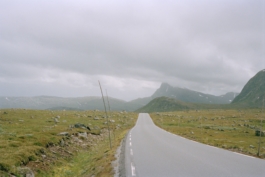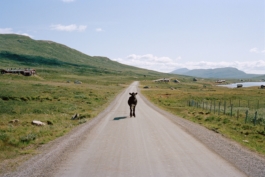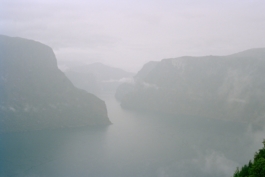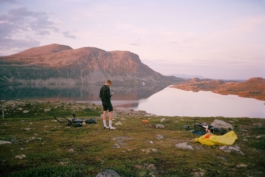The Quest For The Ultimate Cycling Camera
I have long been searching for the perfect camera to accompany me on my cycling trips. At last, I think I might have found it. But first, let me take you on a lengthy journey and go through the ones I had until this point.
Click the pic to see more pics taken with the cameras! ♥
My first companion back in 2015 when I was getting into cycling was a Contax G2 with a 45mm f2 lens. The pictures coming out of this camera on Portra film were so good it almost felt like cheating. But these cameras are getting old now, and as their price has increased they are becoming more unreliable, a £1000 disaster waiting to happen. It is also a little brick of a camera, weighing quite heavily in at 750 grams with the 45 mounted.
So I switched it for a little Olympus mju-II with its excellent 35mm 2.8 lens, weighing in at a ridiculous 135 grams. The optics and autofocus were inferior, but most of the time it didn't matter - sometimes the added vignette even enhanced the pictures. It easily fit into a jersey pocket and absorbed sweat like a champ. Until one day it slipped out of my pocket in a gallery, landing softly on a wooden floor, but hard enough that the autofocus wouldn't work afterwards. I declared it dead and buried it in a drawer.
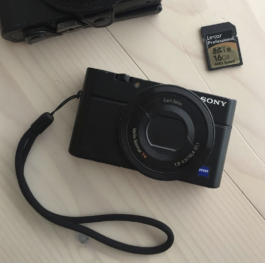
It was becoming clear to me now that these film cameras perhaps were a bit unreliable (my clumsy handling didn't help either). So I reluctantly decided to buy a digital camera. I got a Sony RX100, an old and cheap one, which I brought on one (1) trip. It was a decent camera, but too fiddly in use, and the pictures just didn't spark much joy. I don't like zooms in general, even less so on a cycling camera. I don't want to be making the decision of which focal length to use every time I turn on the camera, that's just a chore (to me at least).

I rebought a G2, only to rediscover why I had switched from it in the first place - so I said my final goodbyes and bought a Fujifilm X100V. I'd owned the original X100 some 10 years ago so this was a nostalgic reunion in more ways than one. It felt pretty much the same as it did back then, except much more responsive. I liked the thought of using the OVF while riding - often on sunny days those back-LCDs and even EVFs struggle to keep up. While this sounded good in theory, in practice I would often check the screen anyway to make sure the exposure was right. Film can handle a bit of overexposure, digital can't.
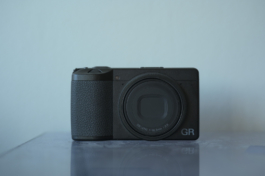
I liked the look of the pictures out of the X100V, I found they had pleasing colour, tonality and depth of field most of the time. The 35mm focal length is also a very comfortable place to be. My only nitpick would be at the pixel level, particularly in high-frequency subjects such as foilage and vegetation, where the X-Trans sensor would struggle to draw a good image. Often these scenes (of which there are many while out in nature) would end up taking on a plasticy, smeared quality when viewed critically. I love bathing in the finer details of photographs, searching through the image and taking pleasure in the small things that reveal themselves (Stephen Shore taught me this with his 8x10" work). With the Fuji, I found the integrity of the image necessary for this kind of viewing to be lacking - when viewed closely, the pictures looked fake, for the lack of a better word. If Shore's 8x10" work displays the ultimate in material and textural integrity, the Fuji would be on the other end, just a bit behind other digital cameras.
A friend called me a fanatic for being so obsessed with this quality, perhaps rightly so. I realise it won't matter for most people, and when posting to Instagram you would be hard pressed to tell the difference. But when viewed full-screen on my 27" 5k display, I can see the difference quite clearly. That is also a good indication of how an A2 print will look, and I like to be able to print at least that size.
So, for all its great qualities - the pleasing tones and colours, the OVF, the superb lens, the inbuilt flash, the autofocus and general responsiveness, the weather sealing (which may not be so good anyway as my friends X100V died quite rapidly when faced with damp conditions) - my hangup on the rendering of fine detail and texture came to be the end of my relationship with the X100V. Maybe one day I will be deradicalised and not mind, or even better, Fujifilm can make their camera with a better colour filter.
In my film days, I shot quite a bit with a Ricoh GR1v. It was a nifty little thing with a great 28mm lens and the best ergonomics I'd ever used on a compact camera, but the wide focal length was just a bit hard to get on with for me. I had a lot of fun with it though, so I decided to go buy the digital GR III to see if this finally could be the ultimate cycling camera.
The Ricoh is designed for one-handed operation, as opposed to the Fuji with its aperture ring and analog-style dials. In practice this makes operating the camera while cycling much easier. It really is pretty ingenious how the interface is laid out - you can tell the design is very refined and thoroughly tested. The camera is small enough to fit in a jersey pocket, but I would rather have it in a small handlebar-mounted pouch to avoid sweat or condensation from ruining the GR III, which does feel slightly fragile (not helped by the stabilised sensor which wobbles around in there when the camera's turned off). The rear LCD is not great when compared to the X100V for example, but at least you avoid the problem of pictures looking better on your camera than when viewed at home.
Speaking of which, when I gaze at the files from the GR III on my previously mentioned 27" 5k display, I am very pleased indeed. Finer details are much more precisely rendered, to an almost unbelievable extent given the dingy size of the thing. As I obsessively zoom in to 400% things hold up remarkably well, which is great because this is how I would look at a print too. When viewing pictures up close, the Ricoh GR III outperforms the X100V by some margin, from slight to noticeably so depending on the subject. Where the X100V is superior is the dynamic range, as the GR III seems to blow out highlights quicker. Expose for the highlights and all should be well as the shadow recovery is very good. The colours are also nice and natural looking.
But there's more to it than that. I admit to having a somewhat unhealthy obsession with cameras, and not necessarily to productive means. But I really do find it fascinating how the interface and design of a camera affects the way you use it. The Ricoh is unique in the field of "serious cameras" in that it wants to be used one-handed and not leashed around your neck, but as an extension of your arm. In doing so, the "sphere of operation" around the photographer drastically increases, which is particularly useful when riding a bike. Coupled with the snap focus function the camera truly becomes a point and shoot. Photographing with the GR III in this way feels akin to fishing - most times the hook will sink unbitten, but every now and then a picture is dragged ashore. Nevertheless, it is always enjoyable.
For now, my quest is over. I think I have found the ultimate cycling camera in the GR III.



